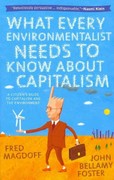Question
Suppose that you are the ticket sales manager for a professional hockey team. The team plays in a small arena and charges a single price
Suppose that you are the ticket sales manager for a professional hockey team. The team plays in a small arena and charges a single price for all tickets to games. Last season, the team charged $10 per ticket and sold an average of 5,000 tickets to each of 30 home games. No concessions are sold at games, and parking is free; ticket sales are the only source of revenue. No games sold out. Short-run costs last season were $1,200,000. The price elasticity of demand for the team's tickets last season was 0.7. That is, if ticket prices were reduced by 1 percent, ticket sales would go up by 0.7 percent.
a. Use the demand/total revenue/total cost model developed in this lesson to describe the ticket price, attendance, total revenues, total costs, and total profits earned by the team. Label each value (ticket price, total attendance, total revenues, total costs, and total profits) on the graph. Note, from the graph, where the team would have maximized profits.
b. The team owner comes to you and tells you that team profits need to increase next season. The team owner proposes that ticket prices be increased by $2 per ticket to accomplish this. Based on the information provided, is raising ticket prices likely to increase team profits next season? Why or why not? Refer to specific features of the graph from question 1 when answering this question.
Step by Step Solution
There are 3 Steps involved in it
Step: 1

Get Instant Access to Expert-Tailored Solutions
See step-by-step solutions with expert insights and AI powered tools for academic success
Step: 2

Step: 3

Ace Your Homework with AI
Get the answers you need in no time with our AI-driven, step-by-step assistance
Get Started


